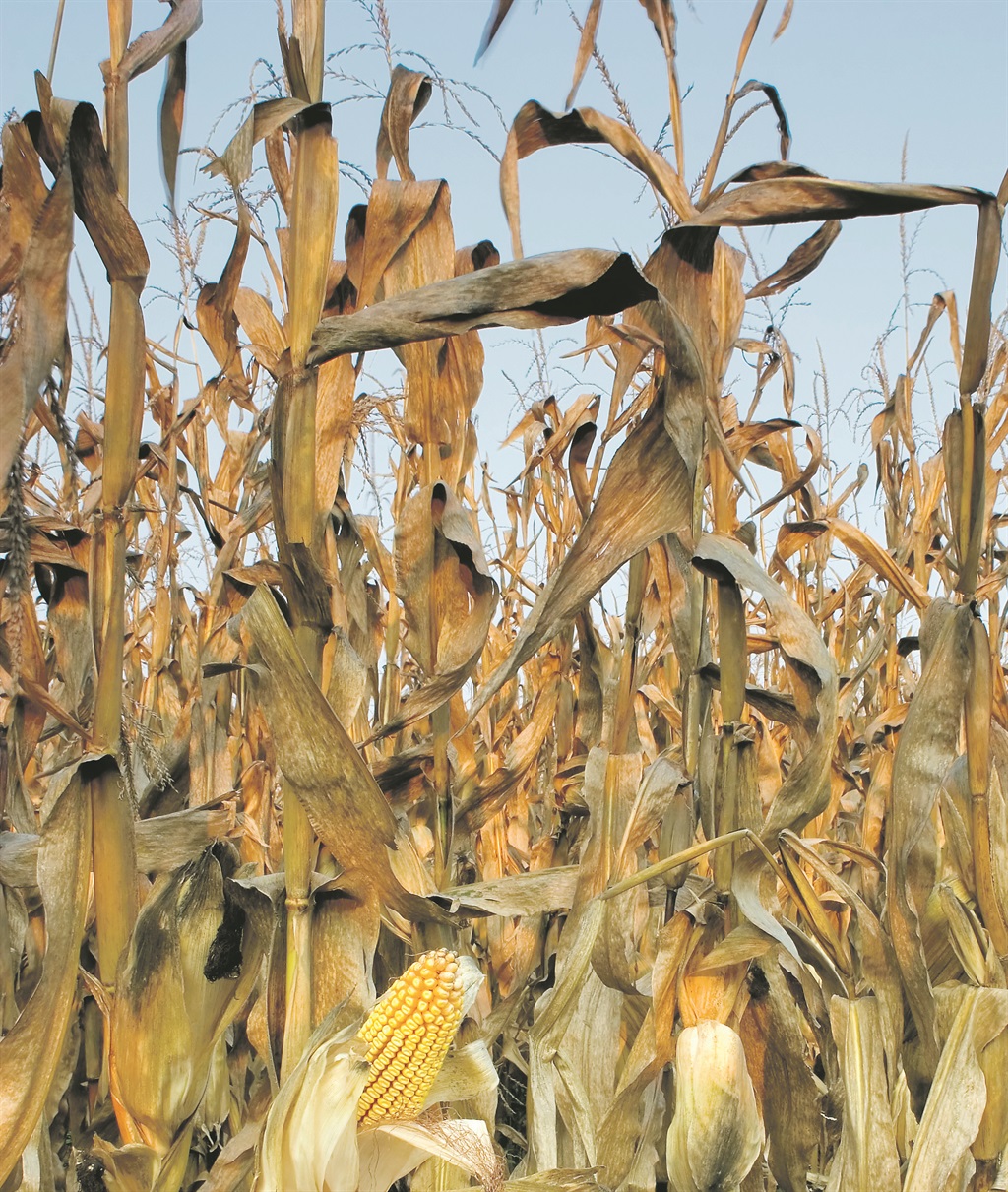
The drought ruining this year’s white maize season will eventually hit South African consumers where it hurts: pap.
White maize hit the historical high of R4 900 a ton this week after shooting up 60% since November.
The previous high point of R3 800 was in 2014, during a brief period of frenzied maize speculation driven by bad supply information.
Since exactly a year ago, the price has gone up by 140% and South Africa’s staple is now trading far above the theoretical maximum level of import parity.
As a rule of thumb, millers pass through 50% of the rise in maize prices to buyers of maize meal, says Wandile Lehlobo, senior economist at farmers’ organisation Grain SA.
Roughly speaking, that would send maize meal prices up by as much as 50%, although higher prices generally take several months to filter through to shop shelves.
There are all sorts of additional knock-on effects when maize prices change, including on the cost of livestock products and meat.
Yellow maize prices are also near record levels, but are being constrained by the effective maximum prices created by the availability of imports.
The result: white maize is trading at an unprecedented and “extraordinary premium” compared with yellow maize, says agribusiness economist at Absa Wessel Lemmer.
Yellow maize has now basically returned to its previous record – also R3 800 – which was also reached during the short burst in 2014.
As it turned out, 2014 yielded a record maize harvest of 14 million tons and both types of maize saw their prices suddenly collapse by more than 50% that year.
Unfortunately, that is not going to be the case this time, as the planting season reaches its end with as much as 70% of farmland earmarked for white maize still lying fallow.
Grain SA has predicted that South Africa will need to import 5 million tons of maize this year – an astronomical amount for a country that is usually self-sufficient and exports surplus maize in good years.
South Africa consumes about 10.5 million tons of maize a year, half of which is white maize for human consumption and half is yellow maize mostly used for animal feed.
Last year’s crop, already a bad one, was 9.9 million tons, double what Grain SA is predicting for this current season.
The 5 million-ton prediction is far from certain, but also not a thumb suck. According to Lehlobo, the planted hectares in the current season are about 1.3 million – half the hectares planted in the previous season. Multiplied by the average yield in South Africa, that gives you a harvest of roughly 5 million tons.
The problem is, however, that it is by and large the white maize crop that is going to fail, while more than 80% of the yellow crop has actually been planted.
The South African maize crop generally gets planted in November and December, with the harvest coming in June and July.
Formal crop estimates will only be released at the end of this month by the Crop Estimates Committee, which is part of the department of agriculture, forestry and fisheries. While yellow maize prices are constrained by international prices, there is no equivalent market for white maize to cap prices. South Africa is one of only four countries that trades the white variant.
Lehlobo said South African millers would start contracting white maize from South America, where it was also grown but rarely exported in significant volumes.
The prices being reached in South Africa were starting to make this possible.
“It’s not certain, but my opinion is that is the only likely scenario. Some guys will contract. If you are Tiger Brands, I don’t think you will start producing yellow pap,” he said.
Absa’s Lemmer sees it differently and told City Press that “everyone must consider yellow maize for consumption”.
Yellow maize would probably stay elevated at import parity levels for the next year, said Lemmer.
Many of the country’s maize farmers face ruin after last year’s weak harvest and, for many, this year’s missed harvest. Farmer lobby group AgriSA has called for more state emergency funding, claiming that up to R20 billion is required to bail out maize farmers.
Even though prices are at record levels, this does little for the farmers who are managing to raise a crop this year. Most of them would have pre-contracted their harvests at far lower prices, said Lemmer.
“The price could go to R10 000 without benefiting the farmers,” said Lehlobo.




 Publications
Publications
 Partners
Partners









